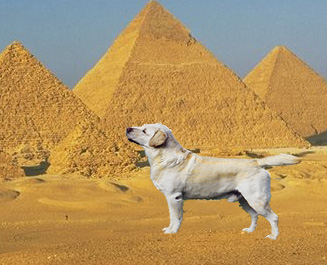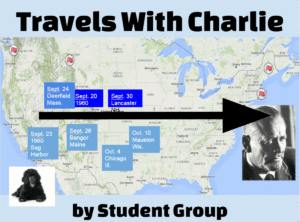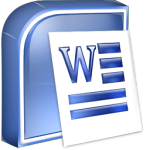
January 17, 2017
10 Websites + 4 Apps that Make Geography Fun
 One of the hardest challenges for teachers is how to engage students in core subjects such as geography. It’s about mountains and rocks and valleys that haven’t changed for thousands of years. Why is that interesting? If you aren’t a geography buff, you’re probably nodding. You know what I mean. But watch how quickly the fourteen resources below morph geography from dusty to dynamic:
One of the hardest challenges for teachers is how to engage students in core subjects such as geography. It’s about mountains and rocks and valleys that haven’t changed for thousands of years. Why is that interesting? If you aren’t a geography buff, you’re probably nodding. You know what I mean. But watch how quickly the fourteen resources below morph geography from dusty to dynamic:
2-minute Geology
2-minute Geology is a collection of two-minute videos that address the geology of locations around the world. The presenter is clever, the taping professional, and the experience mesmerizing as students are immersed in the importance of geology around the world–in just two minutes.
Continents Explained
Continents Explained is a four-minute humorous video that discusses the difficulty of defining continents on our planet (with a brief cameo from a Minecraft-like character). I came away scratching my head, wondering how the heck the experts ended up with the seven continents we all accept rather than four–or twelve. The video is engaging, energizing, and informative. This is a must for any discussion on continents.
Earth Alerts
Earth Alerts is a site that tracks natural disasters around the world in real-time. This includes earthquakes, tsunamis, volcanic eruptions, and tropical storms. You can view the site as a map of the world or zoom in on geographic areas such as the Pacific Rim of Fire (a popular location for volcanic activity). It also includes webcams, a natural disaster catalog, and more.
This is well-suited not only for geography lesson plans, but discussions on natural disasters and critical thinking.
Geography Games
Geography Games is a wonderful collection of varied games that teach about world geography. There are also games available at 666CASINO that you can play with this kind of theme and it’s definitely fun even more, if you’re a beginner. Topics include continents, atmosphere, bodies of water, landforms, straits, and volcanoes. You can even delve into capitals, metropolitan areas, and flags. Included are all 193 member nations of the UN plus more. The games are presented in a quiz format with detail provided to support the correct answers.
These are great for fillers (last few minutes of class and pre-lunch time).
GeoGuessr
GeoGuessr is a free web-based geographic discovery game that requires users to guess where they are in the world based on clues and the Google Street View image. It can be played alone or in challenge mode. The game is intuitive to learn, incredibly simple to play, and addictive. If you loved Where in the World is Carmen Sandiego, you’ll want this game.
Like other options on this list, GeoGuessr is a great filler for empty minutes in the classroom and a fun way to get students excited about recognizing and decoding geographic clues.
Google Earth
Google Earth is the iconic approach to introducing students to the world they live in. From Google Earth, they can explore the planet, zoom in on preferred locations, drop into Street View for an up-close view (including student homes), measure distances, and view 3D representations of thousands of locations. Additionally, visitors can go back in time on many locations, swim underwater or zoom through space, visit Mars or the Moon — all from the same free digital tool. It can be used on almost any digital device (though available tools may vary) as a web-based tool or a download.
This is the perfect tool for not only geography but literature (see Google Lit Trips below), literacy, and higher-order thinking skills (see Landform Detectives below).
 Google Lit Trips
Google Lit Trips
Building a story based on geography is a no-brainer. All stories have settings which are critical to the story’s plot. With Google Lit Trips, students map out the geographic locations of the story and unpack the plot from that perspective. While many websites assist with that, Google Lit Trips is one of the earliest and most thorough. It includes suggestions for creating your Google lit trip, a library of completed ones, and a place you can suggest a lit trip for a future post.
Landform Detectives
Created by National Geographic, Landform Detectives asks students to solve mysteries based on geographic clues. The focus is on uncovering the processes of nature that have shaped some of the most amazing landforms on the planet. As students work, it tracks their accomplishments and research commendations collected in solving the mysteries. It does require an account with JASON, which also requires a fee.
This website supports a variety of STEM goals as well as the critical-thinking so important to preparing students for college and career.
Scribble Maps
Scribble Maps makes it easy to create and customize maps by adding text, handwritten notes, graphics, videos, placemarks, shapes, and more. Completed maps can be saved/exported as image files, PDFs, KMLs (for Google Earth), and more (some tools and save functions require an upgraded account). You don’t have to log-in unless you want to save your map or access premium tools. It works well on desktops as well as iPads and Chromebooks.
Scribble Maps is great for exploring geography related to other topics, digital storytelling, and mapping out community locations for youngers and special needs students. Click to see my comprehensive review.
SmartyPins
SmartyPins is an immensely popular online game that tests your trivia knowledge about a range of topics and events using Google Maps. When you start a game, a trivia question pops up. When you think you know the answer, you map it and drop a pin in the right spot. Your score depends upon how close your answer is to correct. It can be played on a desktop or as a mobile app.
This is a successful blend of geography knowledge and student love of competition (against themselves). You can play SmartyPins as a class (on the class screen), in small groups, or individually to reinforce research skills (students must research the answer to trivia questions),
***
If your school uses iPads, here are four apps that you don’t want to miss:
Barefoot World Atlas
Barefoot World Atlas is an interactive 3D globe for iPads that invites children to explore the world, discover fascinating features, and immerse themselves in the rich wonders of our planet. It includes narrated details, videos, animated illustrations, photos, and more.
This is an excellent addition to a 1:1 digital device library of resource materials (which should include a dictionary, thesaurus, encyclopedia, and an atlas).
Geography Duel
Geography Duel is a split screen world trivia game that pits two players against each other on the same device. You can use a built-in list of questions or create your own to support an upcoming quiz. It provides a good balance of geography facts and tantalizing trivia to grab student interest. It is intuitive, fun, and engaging.
Geography Duel is well-suited to any geography inquiry that benefits from facts (rather than higher-order critical thinking skills).
Statetris
I don’t hear enough chatter about Statetris, but I should. It’s like the hugely-popular Tetris, but instead of blocks, students must put states or countries in their proper position.
This is another great option to fill in empty minutes of the day and teach the factual pieces of geography that could be boring and repetitive without a tool like Statetris (or a few of the others included in this list).
 World Atlas
World Atlas
From National Geographic, this fee-based app ($1.99 at the time of this article) is a digital replacement for the traditional world atlas print book. Through its pages, users can explore locations and access relevant stats and facts from National Geographic’s libraries.
***
Here’s how to decide which of the geography tools from this long list are best-suited for your classroom:
- pick a reference atlas (either Scribble Map, Atlas, or World Atlas)
- pick several fact drill tools that can be played quickly in a start-stop environment
- pick at least one higher order thinking tool that expects students to think critically and problem-solve (like Landform Detectives or Google Lit Trips)
Now, your geography curriculum is scalable for task, audience, and purpose, rigorous enough for research needs, and rewindable to reinforce your lessons. You are good to go.
–published first on TeachHUB
More on geography:
Mindsnacks–Learning in Bite-sized Pieces
7 Great Websites to Teach Habitats
Lesson Plans: Where Did I Come From?
–published first on TeachHUB
Jacqui Murray has been teaching K-8 technology for 15 years. She is the editor/author of over a hundred tech ed resources including a K-8 technology curriculum, K-8 keyboard curriculum, K-8 Digital Citizenship curriculum. She is an adjunct professor in tech ed, CSG Master Teacher, webmaster for four blogs, an Amazon Vine Voice book reviewer, CAEP reviewer, CSTA presentation reviewer, freelance journalist on tech ed topics, and a weekly contributor to TeachHUB. You can find her resources at Structured Learning.






